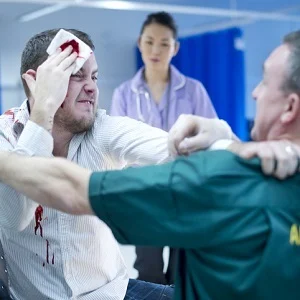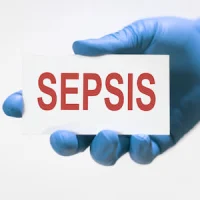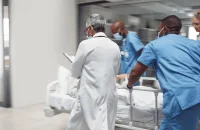Violent attacks against emergency physicians remain a problem. While mass shootings at hospitals are quite rare, violent attacks against emergency physicians are becoming too common these days.
There have been cases where emergency physicians have been knocked unconscious, physically assaulted, hit, bitten, kicked, and punched by patients. According to a recent poll conducted by the American College of Emergency Physicians (ACEP), 47% of the respondents had been physically assaulted at work. 70% of the respondents believed that violence in the emergency department has increased over the last five years. 80% said that patient care is being affected because of this violence.
You might also like: Prevention and Management of Burnout in the ICU
The US Department of Labor's Occupational Safety and Health Administration also reports that compared to other industries, healthcare workers are four times more likely to take days off in order to recuperate from a violent attack. There is a very strong possibility that these figures are understated because hospitals are not required to report attacks on healthcare workers. What's more, worrisome is the fact that even though hospital administrators respond to nearly 7 out of 10 attacks, only in around 3% of cases are charges pressed. Violence in the ED is not just harmful to the ED staff but also for patients. Any violent incident can harm a staff member but at the same time, patients can also be injured or traumatised.
Unfortunately for healthcare professionals, hospital administrators are often more concerned about their image and their patients as opposed to their staff. While hospitals may never become as secure as a commercial airline, it is still important to implement measures that will ensure the security of ED staff. This includes adding more security guards and cameras and increasing parking lot security and metal detectors. There should also be more screening inside healthcare facilities. Also, ED staff should be provided with training as to how to handle potentially volatile situations in the emergency department. For example, tips on how to position yourself when delivering bad news or entering a room with another individual as opposed to going in alone.
ED staff should also be provided tips in body language and how to recognise a situation that could potentially get violent. Violent situations can happen instantly and that is why it is important for ED staff to know how to watch for warning signs and to immediately speak up or report if something happens.
Recently, the ACEP has partnered with Emergency Nurse Association to create an information campaign. The initiative "No Silence on ED Violence" highlights the importance of improving workplace safety for ED staff. It also alerts policymakers, stakeholders, and the public in general about this extremely serious issue that must be addressed. Hospitals should have a zero-tolerance policy for aggressive behaviour in healthcare facilities. They should not try to hide incidents and protect her image. Instead, they should support their staff and push for charges against patients who are violent.
Source: Annals of Emergency Medicine
Image Credit: iStock
References:
Kelly M (2020) Violent Attacks Against Emergency Physicians Remain a Problem. Annals of Emergency Medicine, 75(2):A11-A14 doi.org/10.1016/j.annemergmed.2019.12.019
Latest Articles
emergency department, ED, patient violence, staff safety
Do hospitals put satisfaction and image over staff safety? How should they control increasing violence in the ED?










